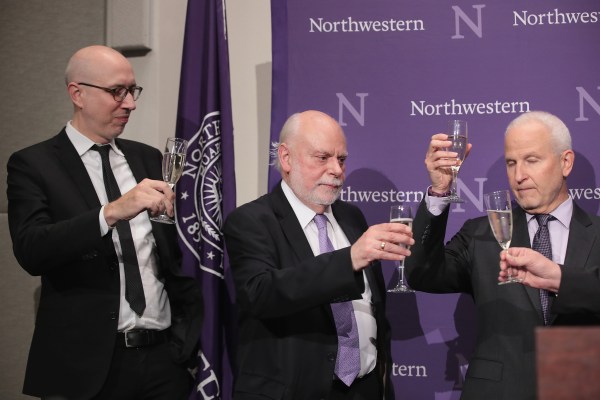CRISPR, the gene-editing technology revolutionizing the biotech industry, has failed to take home the Nobel prize in chemistry for the second year in a row.
Instead, the award went to Jean-Pierre Sauvage, J. Fraser Stoddart, and Bernard L. Feringa – three men who developed the world’s smallest machines using molecular physics. Each will share equally in the 8 million Swedish kronor, or about $930,000 prize from the Royal Swedish Academy of Sciences.
Last year the prize went to three other European scientists for their work in mapping out how DNA repairs itself.
Not to diminish the work of these other scientists, but it’s quite a shock that what seems the scientific discovery of the century has failed to take home the prize yet again. CRISPR has the capacity to dramatically reshape the world as we know it in food, medicine and materials science, acting as a sort of DNA scissors, allowing scientists to precisely cut pretty much any gene — like those that make brown spots on white button mushrooms or cause a particular hereditary cancer.
So where does this leave this ground-breaking invention? While there is no such thing as a runner-up for a Nobel prize, CRISPR could get another shot next year.
Meanwhile, the much-lauded scientific discovery is steeped in a heated patent war, pitting MIT’s Feng Zhang against Berkeley’s Jennifer Doudna and her colleague now at Berlin’s Max Plank Institute, Emmanuelle Charpentier, over the rights to the proprietary technology. CRISPR was first discovered in 1987 but proved viable by Doudna and Charpentier using Cas9 technology in 2012.
But MIT filed faster than Berkeley and Zhang and his colleagues have formed their own biotech firm Editas Medicine to come up with new solutions to using the tech. Meanwhile, Doudna and Charpentier have also created CRISPR companies — Doudna at the helm of Intellia and Charpentier at CRISPR Therapeutics.
Editas and Intellia went public earlier this year and Charpentier’s CRISPR is not far from going on the stock market, too.
And there are other players on the scene for that Nobel — Zhang is one of them and holds the lion’s share of the patents associated with the Cas9 technology.
Then there are those building upon CRISPR as a platform, using Cas9 to get it there. Stanley Qi, a scientist at Stanford University, came up with a technique to use CRISPR Cas9 as a sort of platform for turning certain genes on and off instead of snipping them. Also, George Church, Harvard professor, and father of the Human Genome Project, and one of the co-founders of Zhang’s Editas medicine came up with a way to convert stem cells into neurons using Cas9.
Depending on who you ask, the CRISPR credit either goes to Doudna and Charpentier or to Zhang, but many, many people contributed to the invention of CRISPR Cas9, its myriad future uses, and subsequent ethical debates. Unfortunately, the Nobel prize will only allow three people to claim the award for their work.
But eventually, someone will get the award for their work on CRISPR. Whom that might be is still up in the air.
